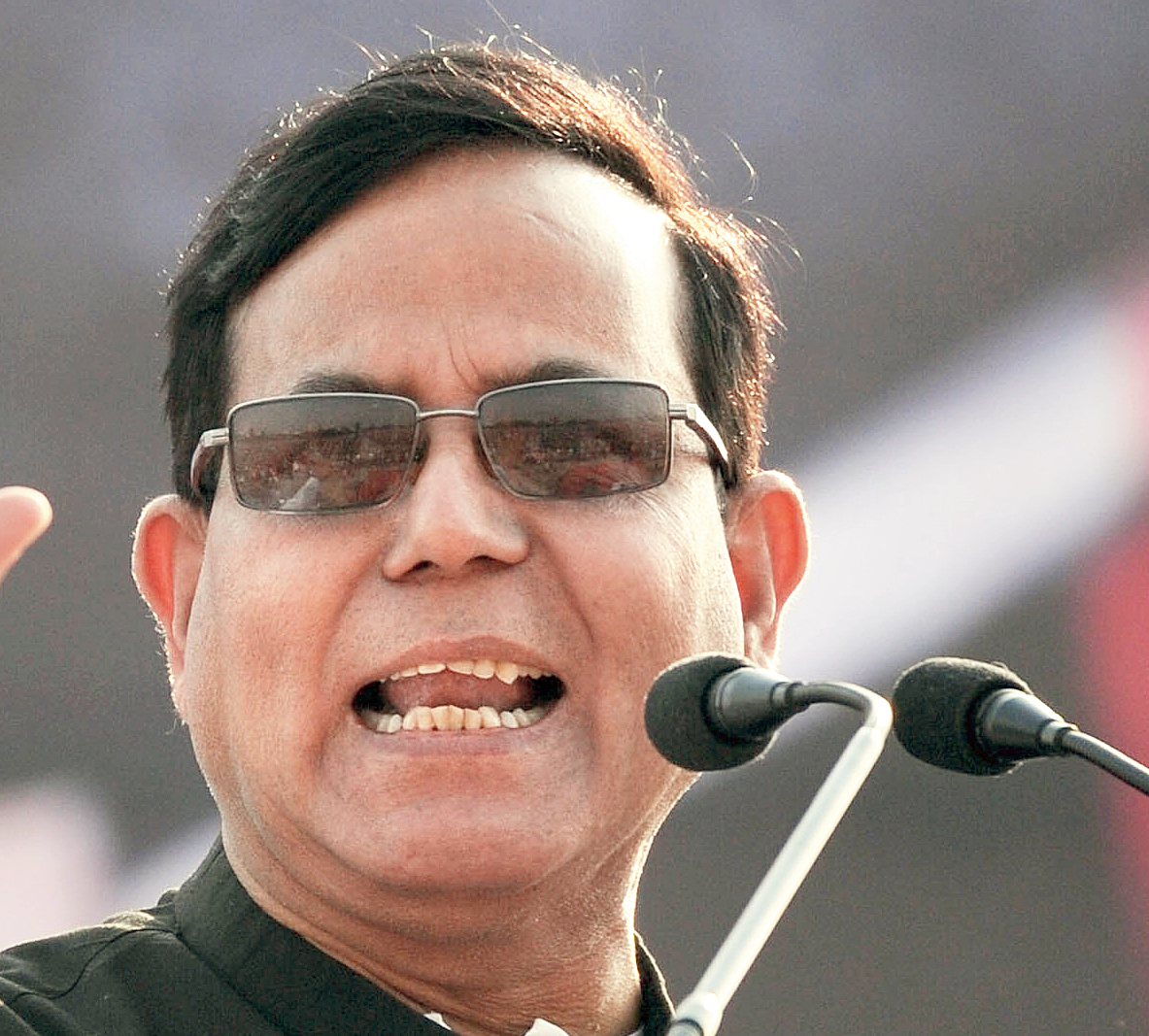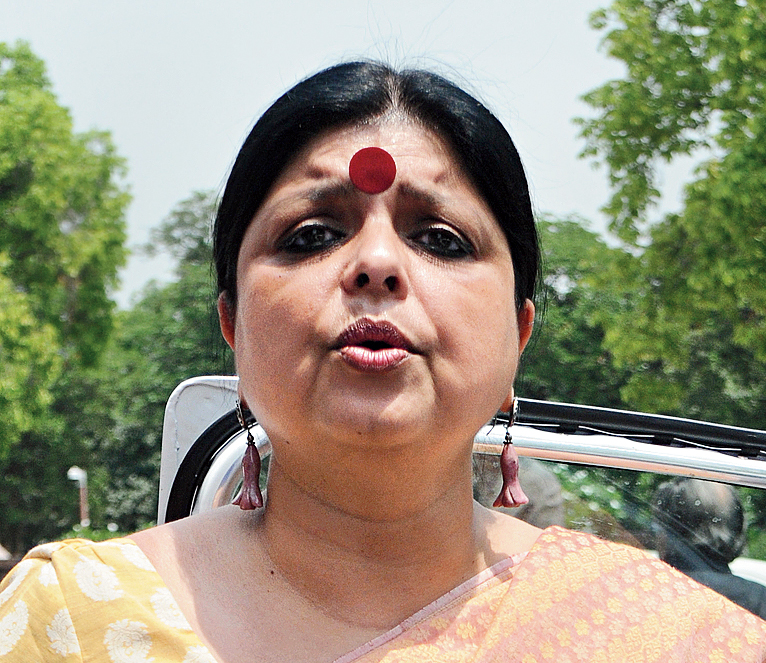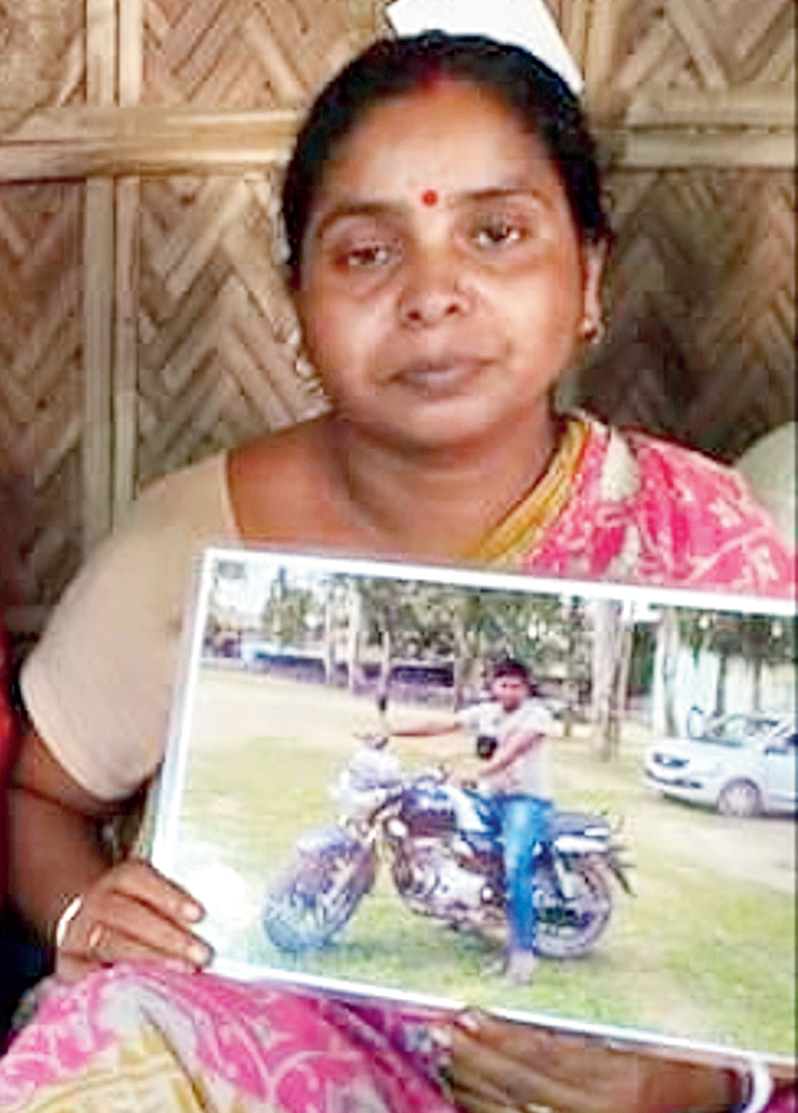Tea stall 1
Village: Golapara
Panchayat: Panditpota II
Block: Islampur
Topic: Narendra Modi has to be defeated
Tea stall 2
Village: Malon
Panchayat: Nawda
Block: Hemtabad
Topic: Narendra Modi has to be made the winner
Both the tea stalls are in North Dinajpur. They wear almost identical ramshackle looks and sell tea — with liberal doses of sugar — in small glasses for Rs 5 each. Local villagers spend considerable time at both the stalls in the evenings. The physical distance between the two is 115km. But as discussions — patrons at both stalls are obsessed with politics even in peak IPL season — continue, the real difference tumbles out in the open.
The crux of the discussions at the two tea stalls defines the battle ahead for Raiganj Lok Sabha constituency, a narrow strip sandwiched between Bangladesh on the east and Bihar on the west. With the BJP’s steady rise in Bengal, there is little doubt that the battle for the state is a direct fight between the two Ms — Mamata Banerjee and Narendra Modi.
The free-flowing discussions at the two tea stalls reveal that the April 18 poll at the constituency, which has 15.95 lakh voters, is about polarisation along religious lines, a factor that has never assumed such proportions in Bengal.

BJP chief Amit Shah campaigning in Raiganj on April 11. (PTI)

Mohammad Salim The Telegraph file picture
“The BJP was never a force here…. In the last panchayat elections, the BJP entered the scene. And now I can tell you with surety that the Hindus in Malon will only vote for Modiji,” declared Kalyan Barman, a farmer with family holding of over 40 bighas.
Barman, from the Rajbangshi community, clearly looked an opinion maker. Probably the size of the family’s land was why others were listening to him with rapt attention.
Chanchal Deb Sharma, who made it to the Nawda gram panchayat as a member with saffron colour, smiled his approval as Barman spoke. “I contested the rural polls as people like him prodded me to put up a fight,” said the young panchayat member, confirming Kalyan’s status in the village along the India-Bangladesh border.

Deepa Das Munshi The Telegraph file picture
Hashibur Rahman was steering the discussion in Golapara, which is under Islampur Assembly segment that has around 71 per cent Muslim voters. Unlike the Malon tea stall, the talking heads here were multilingual; they spoke in Hindi, Bengali and Surjapuri, a language that has similarities with Kamatapuri, Assamese, Bengali and Maithili and is spoken in parts of Bihar and Bengal.
“You know that Muslims are living in fear in the country…. You are also aware of what’s happening in our neighbouring village of Daribhit. The BJP has to be stopped in Raiganj,” said Rahman, who is in his sixties and was smoking, ignoring the advice of his “Bangalore-doctor”.
Others at the table were silent for a while. Mohammad Shafiq intervened with a statement of fact: “But our votes will get divided.”
Raiganj — with over 52 per cent Muslim voters — has become a psephologist’s nightmare because of this complex arithmetic.
The CPM’s Mohammad Salim had won from the seat in 2014 with barely 28.94 per cent of the polled votes, followed by 28.79 per cent that the Congress’s Deepa Das Munshi, wife of former central minister and Raiganj’s tallest political leader Priya Ranjan Das Munshi, had bagged. Ahead of the ruling Trinamul, the BJP nominee had bagged 21.06 per cent votes, which had clearly signalled signs of a saffron surge.
The stage is set for another close finish as Raiganj is hosting a four-cornered contest with formidable candidates. In the campaign phase, the contenders have had multiple national and local political and economic factors on their lips, but the decision on whom to vote for will not hinge on these issues.
While sipping his evening tea at a stall in Khayeshpur village under Karandighi Assembly constituency, primary school teacher Abdul Hannan offered an explanation.
“We held a meeting of 500 people recently and decided to back the Trinamul. Last time, we were with Salim sahab. He is a nice man, a good speaker. But he doesn’t have the organisation to protect us,” said Hannan, who had been the pradhan of Altapur gram panchayat twice as a Forward Bloc nominee.
Last summer, his daughter-in-law became a panchayat samiti member as a Left nominee, but the villagers, under Hannan’s leadership, have shifted their allegiance to Trinamul en masse ahead of the polls.
If Khayeshpur has witnessed realignment in favour of Trinamul in the last few months, Daribhit — a nondescript village that shot to national fame last September after students and local people protested the appointment of teachers at a local school — has swung the saffron way. Several local politicians, cutting across political lines, said the Daribhit protests, in which two men in their early twenties died of bullet injury, and the “language movement” thereafter made the BJP a key player in Raiganj.

Manju Barman, holding a picture of her son Tapas who died during a protest outside Daribhit High School on September 20, 2018. Picture by Koushik Sen
Such has been the impact of the Daribhit incident that BJP nominee Debasree Chaudhuri launched her campaign from the village, which has hardly witnessed any campaigning initiative by the Trinamul.
“The BJP leaders stood by us after I lost my son due to police firing,” said Manju Barman, whose son died during the protest outside Daribhit High School on September 20.
“The police force of the Trinamul government killed my son (Tapas) and his friend (Rajesh Sarkar). We are fighting for a CBI probe into the incident. I want Modiji to win as he has promised us justice.”
The Bengal BJP leadership took the family members of Tapas and Rajesh to Modi, party chief Amit Shah and President Ram Nath Kovind.
Some local residents, at a tea stall-cum-sweet shop belonging to the Barman family, stressed that almost all the 10,000 votes in Daribhit, a Hindu-dominated village, will go to the BJP as the party stood by the villagers.

The twin deaths in Daribhit did not result in any visible strife, but they completed a process of polarisation that has made the BJP’s Chaudhuri a frontrunner for the seat. Signs of polarisation are visible even beyond the villages around Daribhit.
The villagers engrossed in political discussions at the tea stalls in the Muslim-dominated villages of Golapara and Khayeshpur admitted they were aware that “Modiji’s party” was in an advantageous position as Muslim votes remained divided among the Trinamul, Congress and CPM.
During her two campaign meetings in the districts, Mamata tried her best to explain the “futility” of voting for either the Congress or the Left by projecting herself as the lone crusader against Modi in Bengal. So, instead of seeking votes for her candidate Kanaialal Agarwal, whose nomination made a section in the party unhappy, she has converted the battle for Raiganj into a fight between Modi and herself.
Chaudhuri will face a tough challenge from Trinamul if Mamata’s message has takers. Else, it’s advantage BJP.
Additional reporting by Koushik Sen
- Raiganj votes on April 18











